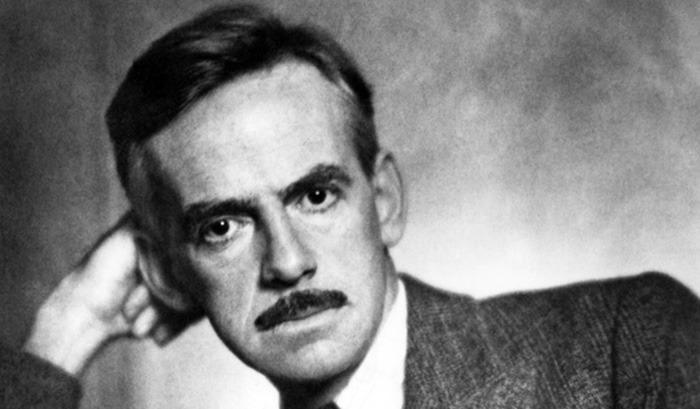While waiting outside the International City Theatre in Long Beach earlier this year, I noticed a CD case resting innocuously on one of the concrete picnic tables. Curious, I picked it up and gleaned almost nothing from the abstracted, enigmatic covers other than “Yuyanapaq,” which I assumed was an artist’s name, and “Ccollanan Pachacamac”, which I assumed was the album name, and a track listing. The CD was numbered, indicating that it was a limited edition. Looking around, I didn’t see anyone rushing back to the table breathlessly claiming to have left it behind. So I took it in the belief that it had been deliberately left behind by the artist for a stranger to discover and, hopefully, enjoy.
[img]1284|left|||no_popup[/img]
Menagerie of Dreams
I had to wait until after the performance to listen to the CD, and the circumstances in which I encountered Yuyanapaq’s music amounted, surprisingly, to a surreal reenactment of an urban driving scene from a movie. It was along the 110, my favourite route home after a performance at the ICT, that I popped the CD in the car’s player. Around me, the Ports of Long Beach and Los Angeles reached out to the oceans, night-time cities of lights and ships, cargo containers and massive cranes. Looking out from the Vincent Thomas Bridge always creates a strong impression; it’s like witnessing the stilled heartbeat of civilization, a sigh in the movement of people and products that drives the economy. And on the music player is, somehow, the perfect soundtrack accompaniment to the industrial vistas – electronic in form, eclectic in spirit, and defiant of easy categorization. It’s like music from a carnival, a dream, a quiet evening’s introspection whose atmospheric style can draw on anything, at any given moment, from ambient to industrial, electronica to trance. To convey an approximate impression of musical character, one could even gently invoke minimalism in the sense of Philip Glass, who preferred to say he composed “music with repetitive structures.” However described, the music is evocative and robust.
Later, I delved into the cinematic side of Yuyanapaq’s work as I discovered that the CD comes with a DVD. Yuyanapaq kindly sent me more discs of his work. The films are experimental and artistic, at times offering abstract patterns and at others delivering identifiable but cryptic imagery. Art films, in other words, with all the loaded baggage the term entails, based on the viewer’s own predilections. On their own, they are interesting exercises in filmmaking. Paired with the music, however, the films become complete experiences that are almost shamanistic in scope – provided viewers have the patience for non-narrative cinema.
But who is Yuyanapaq? The CD insert wasn’t forthcoming, and neither was the website. Shortly after hearing that first album I reached out to Yuyanapaq via the website, and he agreed to an interview via email. The result could be called, in grand fashion, a world’s first as this marks the first time Yuyanapaq – a man in his thirties who currently resides in Santa Ana, CA – has peered from behind the veil of anonymity and privacy to speak with the media and offer insight into his art.
I'd like to begin with the meaning of your performing name, Yuyanapaq, and the names of your albums. Could you provide a translation and describe the significance of your work's titles?
My performing name Yuyanapaq means “to remember” in the Quechua language (of southern Peru, where my family is from). The titles for the four-part musical films, or audiovisual works of the Ccollanan Pachacamac tetralogy (to be completed in 2012), are also in Quechua: Ccollanan Pachacamac (translates as “mother earth”) , ricuy auccacunac (“witness my enemies”), Yahuarniy (“blood” or “my blood”), and Hichascancuta (“shedding from myself”). These were the final words spoken by the last Inca, Tupac Amaru, who was captured by the Spaniards (and beheaded) in 1572 after living in seclusion as the final leaf of a great tree of ancient American leaders and artists, astronomers & mathematicians. I choose these words as an observance of the ancient shamanic knowledge of these American peoples, from their knowledge of the stars (the cycles of Venus, the precession of the equinoxes, the dark rift or black river of the Milky Way) to their knowledge of the sacred plants (the peyote cactus of northern Mexico, the psilocybin mushroom of central Mexico and Guatemala, the ayahuasca vine of amazonian Peru, and the salvia divinatorum leaf of the Mazatec cloud forests, to name a few). I view these words not in a retributive manner, but rather as a meditation on the nature of life itself
In the words above, I have spoken of Tupac Amaru's execution as being one of the most dramatic examples of the conflicting tectonic plates of an ancient American tradition of shamanism and use of plants to “see” and experience reality (on one hand), and the swarming European steamroller of the conquistadores (on the other), with a religious agenda that devastatingly demolished in many sections of the Americas the anciently preserved mythology and world order.
I thus view Tupac Amaru's words as the faintly audible voice of a people, the indigenous American peoples of both continents that have found their mythologies, their shamanic traditions and plant knowledge put under the execution block of unchecked capitalism until the words are as a whisper.
The element of surprise is a defining feature of how you distribute your work, notably in the way you leave CDs for people to discover by happenstance, and what we listeners can discover in your music. But how does it manifest itself in your creative process? How do you surprise yourself?
The element of surprise, or the “objective chance” of the 1920s surrealists, is as a gateway for the music and films to create themselves. For the music of the Ccollanan Pachacamac film cycle, I have amassed an immense library of sounds sampled from films. These sounds are taken mostly from films of the ‘20s and ‘30s, where an elevator door buzz had an entirely different timbre than the electronic buzz of today, and a rolling wheelcart sounded like the end of the world pitched down two octaves. With almost every recording session, I would use a sound from this sample library chosen completely at random with eyes closed. The surprise then was to play it up and down the keyboard, not knowing what it was, to transform the sampled sound with vintage analog effects, and to weave that into the music. The surprises compiled together over the music and filming often created an audiovisual entity that truly seemed to live on its own terms, and as the voice of the plant, of which I will speak later.
[Note: I have investigated the “legality” of using sampled film sounds in recordings as I use them. While this can be looked upon as a legal gray area, I stand behind the principle of “transformative use,” as in using effects to transform the sample into a new sound. Since I only give away these works (of the Ccollanan Pachacamac Tetrology), it is a not-for-profit venture and thus exempt from any such questions of legality.]
A challenge for any artist, regardless of medium, is to take his or her various influences, inspirations and agendas, and transform them into something uniquely personal and expressive. What are your influences and inspirations? How do you make them your own?
My influences and inspirations are diverse. First, it is the sacred plant that is an influence and indeed a voice speaking through me. In the art sessions I take part in (whether painting, music, film or other), I have made extensive use of the partaking of cannabis, or the great gange, in a ceremonial context, as the “director” of the film and the “composer” of the music. I have gone to amazingly intense highs where I worked as fast as possible as if receiving the musical rhythms and passages from the plant herself. So I must first give credit to the sacred plants, which are a grouping of chemicals just as the human organism is a grouping of complex chemicals. I view the sacred plant as an equal partner to myself in the creative process.
Musically, I have been influenced by many, but chiefly by the romantic symphonists (Beethoven and Mahler), and by electronic acts such as Coil, Aphex Twin and Matmos. In film, I have been influenced greatly by Luis Bunuel & Alejandro Jodorowsky.
(To be continued on Monday)
—
Assistant Editor: THE FRONT PAGE ONLINE
email: fsisa@thefrontpageonline.com
blog: www.inkandashes.net
…and also fashion with TFPO's The Fashionoclast at www.fashionoclast.com







